
Harvard University
Astronomy Lab and Clay Telescope
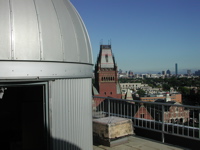
 |
Harvard University
Astronomy Lab and Clay Telescope |
 |
What is HOP? | How do I get involved? | Current Projects | Past Projects | Scientific Results
You are invited to take part in an observing project using Harvard's very own telescope. We will use the 16" Harvard Clay telescope (located on top of the Science Center) to make real scientific contributions. There will be an experienced observer to lead the observing session, so NO experience is necessary.
HOP is designed to get undergraduate students interested in Astronomy and Observing, and to allow graduate students opportunities to interact with undergrads and get more observing/teaching experience.
Each semester we choose an interesting topic or specific target to focus on. Each week we send a sign-up for observing slots and based on your schedule/interest you can participate as much as you like. There is no long term commitment. Sessions will typically last one to a few hours depending on the target of interest and the interest of the group.
An experienced observer will lead the small group of students in using the telescope to make observations. There are also opportunities for students who are interested to learn data analysis and even the possibility of presenting a poster at one of the upcoming bi-annual American Astronomical Society conference.
Sign up for the Harvard Observing Project mailing list to get notified of new observing opportunities!
Current Topic - Spring 2023
Comet C/2022 E3 (ZTF)
Comet C/2022 E3 (ZTF) was discovered in March 2022 by the wide-field Zwicky Transient Facility (ZTF) instrument at the Palomar telescope in California. The comet will make its closest approach, called perigee, to Earth on February 1, 2023. The last time the comet visited the inner solar system was some 50,000 years ago! At its closest approach it can be visible to the naked eye in dark conditions. We will take advantage of this close approach using the Clay telescope to view and image the bright green comet! Join us for a HOP session to learn about observing and comets! What makes this comet appear green? Why do comets have tails? How to we make a color image of the comet?
Spring/Fall 2022
Asteroid Occultations
An asteroid occultation occurs when an asteroid crosses in front of a distant object, such as a star, as seen from our line of sight. As the asteroid crosses in front of a star, a portion of the starlight is blocked. Based on an observer's location, careful timing measurements can help determine the asteroid's shape, and in rare cases even detect a moon of the asteroid. An occultation is a very short event (seconds) but if detected, a large drop in the star's flux will be measured. sThis semester we will be attempting to observe several asteroid occultations from the Science Center using very careful timing measurements with a video camera. Even non-detections are useful to contrain the asteroid's orbit. Come join us for these exciting observation starting after Spring Break!!
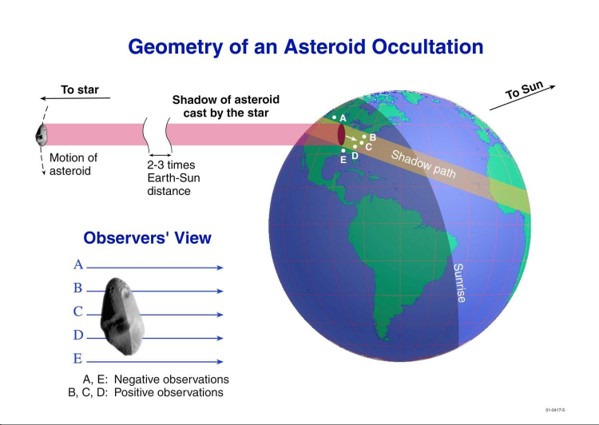
Image Credit: International Occultation Timing Association (IOTA).
Fall 2021
Spectra
This semester we will explore a variety of objects in the night sky using our low-resolution spectrograph. Spectra can provide an enormous amount of information about an object. We will observe different types of stars, nebula, and even planets. Join us to learn about how the Clay telescope and spectrograph operate, how to use a Hg-Ar calibration lamp to convert a spectrum from pixels to wavelength, and how to analyze a spectrum to determine what the chemical makeup is and what else we can learn from the observation.
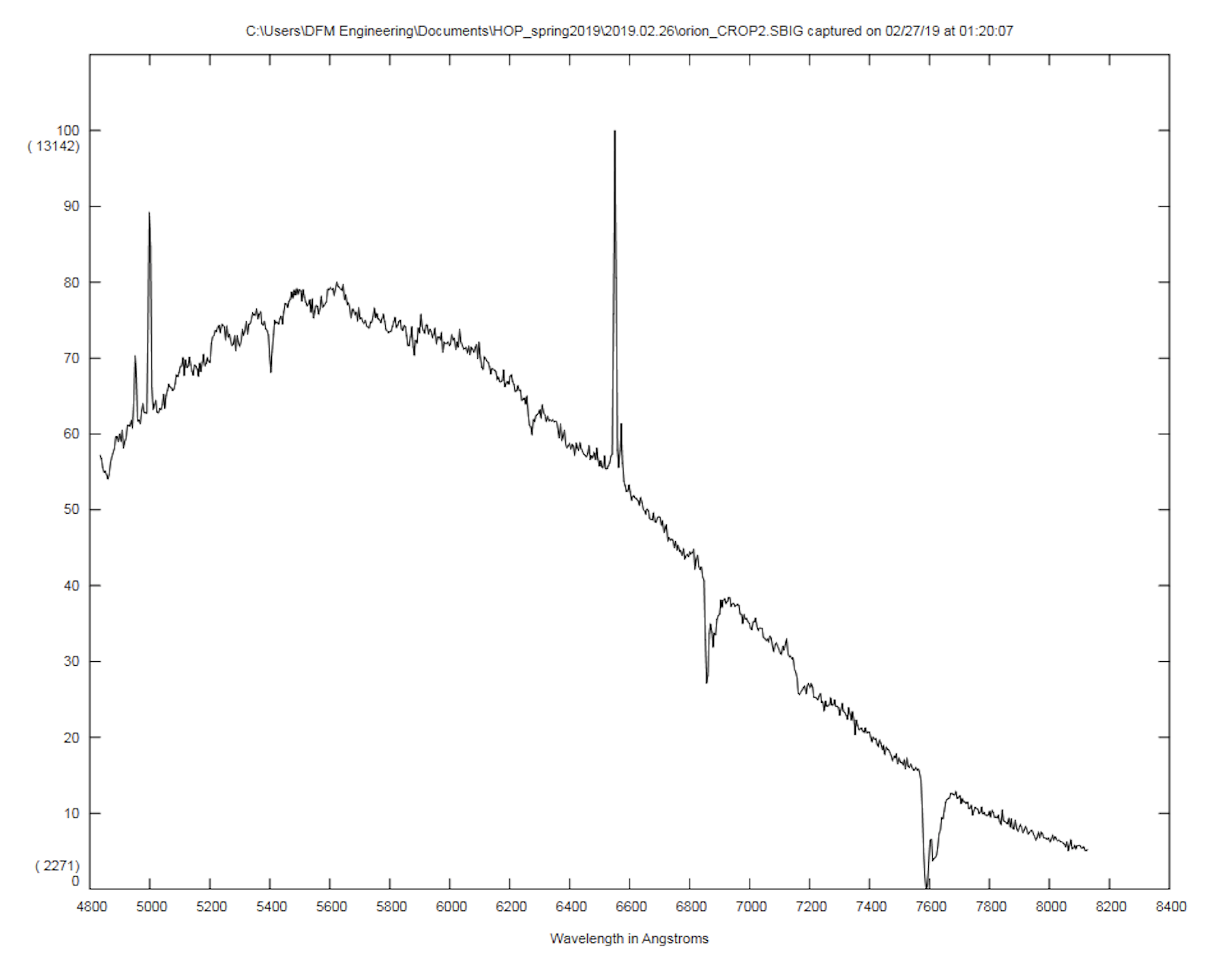
Spectrum of the Orion Nebula taken with the Clay Telescope low-resolution spectrograph.
Spring 2021
High-Resolution Imaging
We use telescopes for astronomy because they can see much fainter objects and much finer details than our eyes are able to. In principle, the bigger a telescope is, the finer the details it should be able to make out. The Clay Telescope has a 16-inch diameter, which means that it should be able to see objects that are 100x smaller than what we can make out with the naked eye. Unfortunately, atmospheric effects degrade the achievable resolution, and in practice the air above the Science Center tends to blur images taken with the Clay Telescope to the point that it can only see details that are 10x smaller than what we are able to see with our eyes. Large astronomical research telescopes use expensive custom-built "adaptive optics" equipment to actively measure and cancel out these atmospheric effects, but the Clay Telescope is not outfitted in this way. Instead, this semester we will be developing and implementing a new software-based tool for mitigating atmospheric corruptions, with the goal of applying this tool to enhance the resolution of images taken with the Clay Telescope. We will aim to collect data on a number of variable astronomical objects, such as binary stars and exoplanets, and to explore how our ability to precisely track their brightnesses over time can be improved using the new software.

Example image of a binary star system before and after the deconvolution technique is applied.
Image credit: Hirsch et al, Astronomy & Astrophysics, Volume 531, id.A9, 11 pp.
Fall 2019-Fall 2020
Exoplanets
We are in an exciting time for exoplanets. Exoplanets are planets that orbit other stars. We have discovered over 4000 exoplanets and we now know that planets are found in many different systems - on short and long periods, on eccentric and circular orbits, and even around multiple star systems. The Transiting Exoplanet Survey Satellite (TESS) launched in April 2018 and is looking for planets that transit bright stars. TESS is an all-sky mission and spent the first year surveying the southern hempisphere and the second year in the northern skies. TESS successfully completed the primary mission and was approved for a 2 year extended mission.
Credit: NASA
This semester we will use the Clay Telescope to follow-up TESS planet candidates. We will aim to confirm the planet candidates while weeding out the false positives. Join us to learn about TESS and exoplanets!
Spring 2019
Spectra
Spectra can give us a lot of information about the objects that we are observing. A stellar spectrum, for instance, can give us information about the star's effective temperature, rotational velocity and even information about the chemical composition. This semester we will attempt to collect a variety of stellar spectra. Stars have different spectral types and those spectral types can be determined by looking at the spectral features and compositions of the stars (see image below).

Image credit: Eugene R. Zizka
We will also observe other interesting targets such as nebula, which also show emission features in their spectrum. Come join us this semester to learn how to use the spectrograph on the Clay Telescope, learn how to collect and analyze spectra and then use those spectra to learn about the objects observed.

Image credit: Adapted from a diagram by James B. Kaler, in "Stars and their Spectra," Cambridge University Press, 1989
and Australia Telescope National Facility.
Spring and Fall 2018
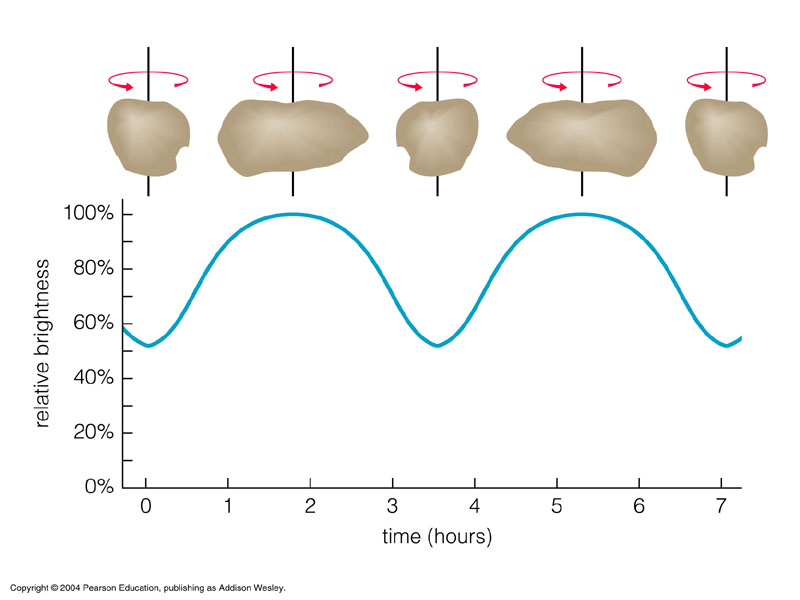
Image credit: Pearson Education
Asteroids are often times referred to as "potato" shaped so as they rotate their brightness varies over time. Most asteroids have rotation periods of a few hours to a few days. This semester with HOP we will observe a few asteroids over the course of several weeks for a few hours a night. Using the data collected we will make lightcurves (brightness over time) to determine the rotation period for these asteroids whose rotation periods have not yet been determined.
Asteroid (3122)Florence recently made a close approach to the Earth on September 1, 2017. Florence came within ~18 Earth-moon distances to the Earth. While this is not the closest approach an asteroid has made to the Earth, nor is Florence the largest asteroid, it reminds us that there are a lot of small bodies in the solar system. Many of the known asteroids and comets have a well-defined orbit but there are many more with uncertain orbits. While most of these minor planets will never directly impact the Earth, there is a small chance that some will cross paths with the Earth.

Image credit: NASA/JPL-Caltech
This semester the Harvard Observing Project (HOP) will take observations of various asteroids and comets, with a specific focus on Florence. These observations will be used to track the motion of the target over the course of the night. These bodies are fast moving and even within an hour (sometimes even minutes) you can detect the motion. We will produce short GIFs and ultimately determine precise positions of the targets to report to the Minor Planets Center, based here in Cambridge, MA. The Minor Planets Center keeps a record of observations of all known minor planets and comets with the task of making sure that none of these objects pose a threat to the Earth. Your observations will contribute to refining the known orbits of some of these potentially hazardous objects.
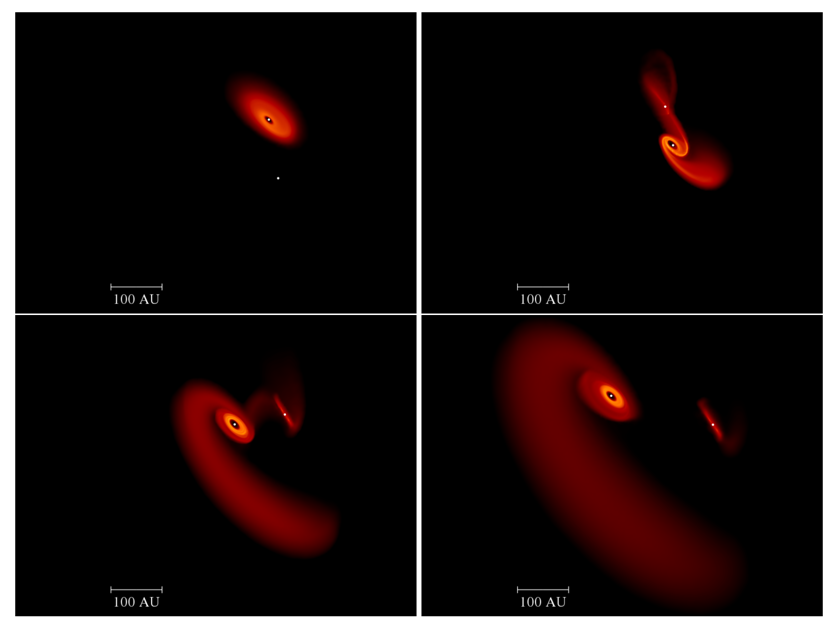
Model view of the RW Aurigae system as viewed from Earth over a 600-year timeframe.
Credit: Dai et al. 2015: A tidal encounter caught in the act: modelling a star-disc fly-by in the young RW Aurigae system
Although we now know of over 4000 exoplanets, planets orbiting stars other than the sun, our understanding of how these planets form and evolve is quite limited. It is understood that planets form inside a protoplanetary disk of gas and dust but it is unclear what governs the large diversity of planetary architectures. From studying young stellar objects (YSOs), where the planet forming process is ongoing, we can gain insight into these initial conditions. Unfortunately, the circumstellar environment of YSOs is quite complex and outside factors, such as stellar companions, can influence or even hinder planet formation.

Lightcurve of RW Aurigae from 1950-2012.
Credit: Rodriguez et al. 2013: Occultation of the T Tauri Star RW Aurigae A by its Tidally Disrupted Disk
The archetype example of the effect binary interaction is RW Aurigae, a well studied YSO near the Taurus constellation. After ~100 years of photometric observations, in late 2010 the entire system dimmed by ~2 magnitudes for about half a year. It is known that the system consists of at least two stars, RW Aur A and B, but high-resolution millimeter observations of the system show the aftermath of a close stellar fly-by. Specifically, the original protoplanetary disk surrounding RW Aur A has been significantly disrupted due to the eccentric orbit of RW Aur B. Since the original dimming of the RW Aurigae in 2010, the system dimmed again in 2012, 2014, and late 2016. The depth and duration of the dimmings vary significantly between events. Interestingly, RW Aurigae has been in a dim state since late 2016 and it is unknown when the system will brighten back to its normal brightness. The cause of these dimmings is highly debated and it is unclear how potential planet formation will be affected by this stellar fly-by. Your HOP observations can provide crucial information on the dust grain properties of the occulting body, supporting one of the previous explanations or ruling them out.
Since the dawn of time, humans have looked up to the stars and wondered: “Are we alone?” The possibility of extraterrestrial life -- and in particular extraterrestrial intelligence -- has fascinated humans for centuries. A radio broadcast of “War of the Worlds” caused mass panic about an alien invasion in 1938, and today many people believe that the United States government recovered a crashed alien spacecraft in Roswell, New Mexico in 1947. Extraterrestrials have a powerful hold on the public imagination.
It is little surprise, then, that an unexplained signal detected by the Kepler spacecraft generated mass speculation about a possible alien origins. Kepler observed about 200,000 stars for four years between 2009 and 2013, searching for planets by carefully measuring the stars’ brightnesses repeatedly, looking for small dimmings when planets passed in front of their stars. Kepler found thousands of planets this way, but one star called KIC 8462852 (or Tabby’s Star, named after lead author Tabetha S. Boyajian) showed dimmings that couldn’t easily be explained. The dimmings happened sporadically, changed characteristics, and could only be produced by enormous, evolving objects with highly irregular shapes passing in front of the star. Astronomers struggled to explain the dimmings.

Image credit: NASA/JPL-Caltech
KIC 8462852 rose to internet stardom when Jason Wright, an astronomer at Penn State University, pointed out that the dimmings are the type of signal we might expect to see if the star hosted intelligent extraterrestrials building a Dyson Sphere -- a theoretical type of megastructure used to collect huge amounts of stellar energy. While the likelihood of an intelligent origin for the dimmings is remote, astronomers are excited to try and unwrap the mystery.
This semester, the Harvard Observing Project (HOP) is going to focus our efforts on monitoring the brightness of KIC 8462852 with the Clay telescope on the roof of the Science Center. Kepler has long-since moved onto new parts of the sky, and can’t continue its observations, so telescopes on the ground have to take up the challenge. We will be searching for more dimmings by taking a few observations a few nights per week. If we happen to catch a dimming, we will immediately send the information to larger telescopes to learn as much as we can about the star, and see if we can find any clues. Your observations with HOP may be key to finding a natural explanation for the strange signals at KIC 8462852 -- or ruling natural explanations out.
Last year, scientists here at Harvard used the Kepler space telescope to discover a planet in its death throes around a dead star called White Dwarf 1145+017. The planet is being blasted by the intense heat of the star and ripped apart by its strong gravity as it zips around the star every 4.5 hours. White dwarfs are the leftovers after stars like our Sun run out of nuclear fuel, so this fate might await asteroids or planets in our own solar system. The planetary destruction around WD 1145+017 has led the media to compare this system to the Death Star from the Star Wars movies (Harvard-Smithsonian Center for Astrophysics Press release , Death Star: White Dwarf is Vaporizing its planets ).
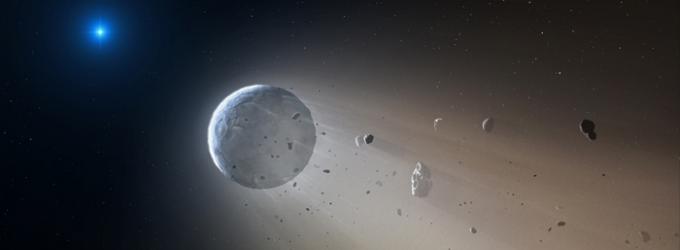
Image credit: Mark A. Garlick / markgarlick.com
What's most exciting about WD 1145+017 is that although it took a 600 million dollar space telescope to discover it, we can learn lots about it using even very small telescopes on the ground. By observing WD 1145+017 with the Clay Telescope here at Harvard, we can help determine how many fragments the planet has been torn into, where they orbit, and long they survive. This is an opportunity to contribute to cutting edge scientific research, and you might even get your name in on scientific publication.
A Once in a Century Opportunity!!
AG Pegasi is a very dynamic system. Its last outburst was in 1860-1870 when it went from magnitude V=6, at its brightest, and has been gradually dimming since to magnitude V=9. That is until this year, between May 27th and June 13th, when this system started brightening again. In the past year the system has brightened by a factor of 6! Little is truly known about this fascinating target’s outburst phase.
Not much new has been learned since Kenyon et al. wrote about it in 1993. AG Peg is what is known as a symbiotic binary star, first classified as such by Cecilia Payne-Gaposchkin (at Harvard!) in 1957. AG Peg is a M III giant with a hot, compact companion star embedded in an ionized nebula with expanding shells of gas. The system is in a 812 day orbit.
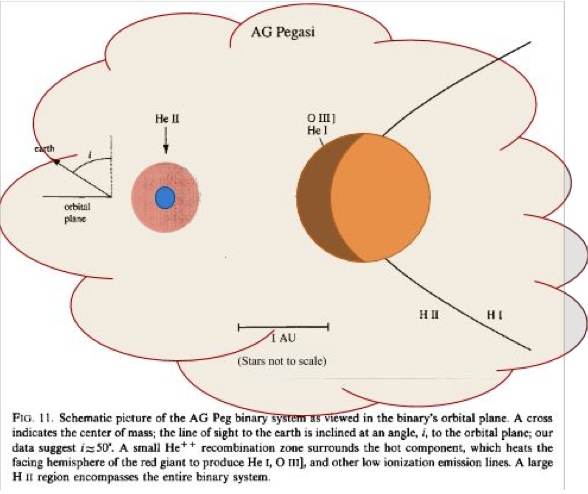
Photometric monitoring allowed early astronomers to discover a lot about this system. During the previous outburst, the technology did not exist to do really precise photometry and the time coverage was sparse, so there is still a lot of information about the system to be learned.
Another particularly interesting opportunity is to track the changes in the spectra to get a physical understanding of how the system is changing during an outburst. Getting photometric and spectroscopic data frequently is very important to our understanding of this unique transient system.
Spring 2015 - Comet Lovejoy
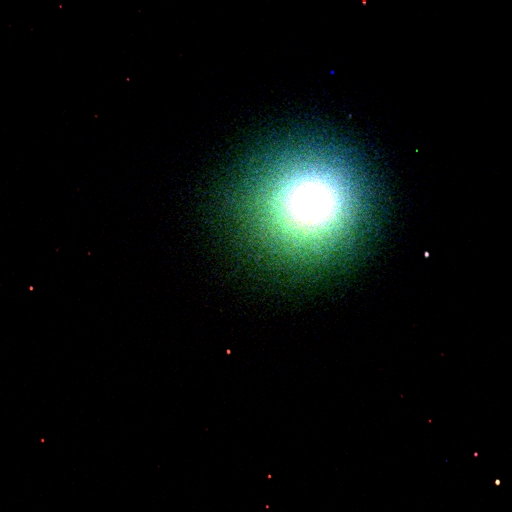
We observed Comet Lovejoy throughout the spring semester after it made its closest approach in January 2015. The above image in BVR shows the bright green comet and the trailing stars as the comet moves through the sky. The green color is from a florescence of diatomic C2 gas.
Spring 2014 - SN2014J

A chance discovery on January 21, 2014 by Steve Fossey et al. of University College London during an undergraduate telescope training session revealed the closest Type Ia supernova in the past 42 years. Type Ia supernova are valuable distance measures and an explosion this close allows for accurate calibration. The Harvard Observing Project monitored this closely for 4 months in BVRi filters and an Harvard undergraduate Missy McIntosh presented a poster (see below) at the American Astronomical Society meeting in Boston, MA (June 2014).
Fall 2013 and Fall 2014 - TargetAsteroids!
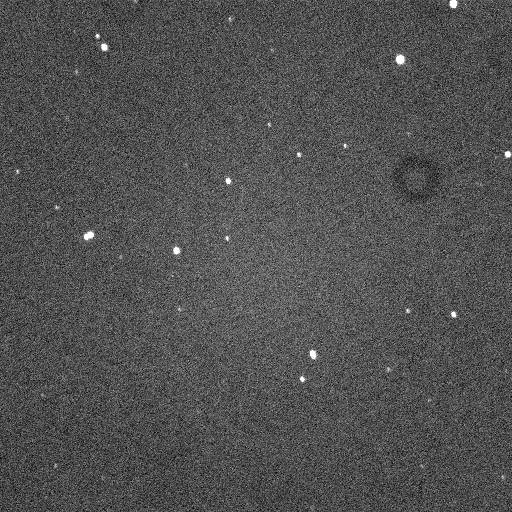
Tracking Asteroid 2005YU55.
We will be participating in the Target Asteroids! citizen science program, which is part of the OSIRIS-REx mission. In 2016, the spacecraft will journey to a Near Earth Asteroid that makes a close pass by Earth every six years and will return a sample of asteroid material. In the mean time, amateur observers - including us - are joining forces to gather more information on NEOs of particular interest to the mission.
Near Earth Objects (or NEOs) are asteroids or comets that are on orbits that take them close to Earth's. Our goal is to do astrometry (measuring position) and photometry (measuring brightness). Astrometry allows us to determine the object's orbit - in particular, you might want to know if it will hit Earth! From photometry, we can measure the rotation period of an asteroid and maybe learn something about it's shape (see, for example, this blog post). Another reason you might be interested in the nearest asteroids is that Planetary Resources announced in Spring 2012 that they are going to mine asteroids.
As an example of what we hope to see, the video to above-left shows Asteroid 2005YU55 on its close approach to Earth in 2011. This video is a composite of 6 images taken by the Fall 2011 SPU21 class.
Resources
Information on the OSIRIS-REx mission to an asteroid
NASA/JPL Asteroid Watch
Twitter feed for the Pan-STARRS1 discoveries of NEOs
Articles about asteroids from the astronomy blog Astrobites
Fall 2012 - Eclipsing Binary Stars
Eclisping binaries are two orbiting stars which periodically pass in front of each other. Eclipsing binaries are useful because the eclipses tell us about the radii and temperatures of the two stars (with other observations, their masses may also be determined). Most stars are in fact part of binary systems. Some binaries consist of two mid-life stars that are still on the main sequence, some contain one star at a later stage of its evolution, and some contain rarer specimens such as white dwarfs or neutron stars.
With our observations, we'll be helping out the eclipsing binary research being led by the KELT and Kepler teams.
Resources
Eclipsing binary simulator
A blog article about eclipsing binaries from the Planet Hunters citizen science project
Fall 2011 - PAWM: White Dwarf Monitoring

Data from one of our PAWM teams. Orange cross-hairs show our data. Red circles are the data averaged over short time intervals.
Harvard joined amateur astronomers around the world in the Pro-Am White Dwarf Monitoring (PAWM) Project. During this month-long pilot project, we looked for transits of Earth-sized planets around white dwarfs.
A transit occurs when a planet passes between us an its host star, temporarily blocking some of the star's light. We see the star decrease in brightness and can use this decrease to determine the planet's orbital period and radius. White dwarfs aren't much bigger than Earth itself, so the transit of an Earth-sized planet could block a lot of light.
PAWM observed 46 white dwarfs, none of which showed evidence for an Earth-sized planet. However, one white dwarf was seen to vary sinusoidally.
July 2020, Minor Planet Bulletin (Abrams et al) Measured Lightcurves and Rotational Periods of (16579) 1992 GO (25660) 2000 AO88, And (37652) 1994 JS1
January 2020, Minor Planet Bulletin (Abrams et al) Measured Lightcurves and Rotational Periods of 3122 Florence, 3830 Trelleborg, and (131077) 2000 YH105
June 2019, St. Louis, MO- American Astronomical Society (AAS)
January 2019, Seattle, WA - American Astronomical Society (AAS)
June, 2018, Denver, CO - American Astronomical Society (AAS)
January 2017, Grapevine, TX - American Astronomical Society (AAS)
June 2014, Boston, MA - American Astronomical Society (AAS)